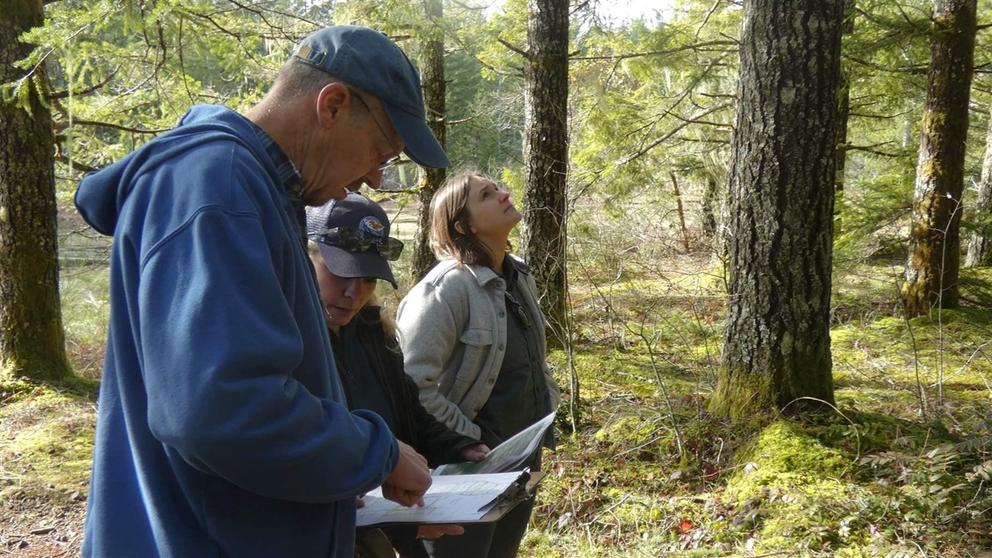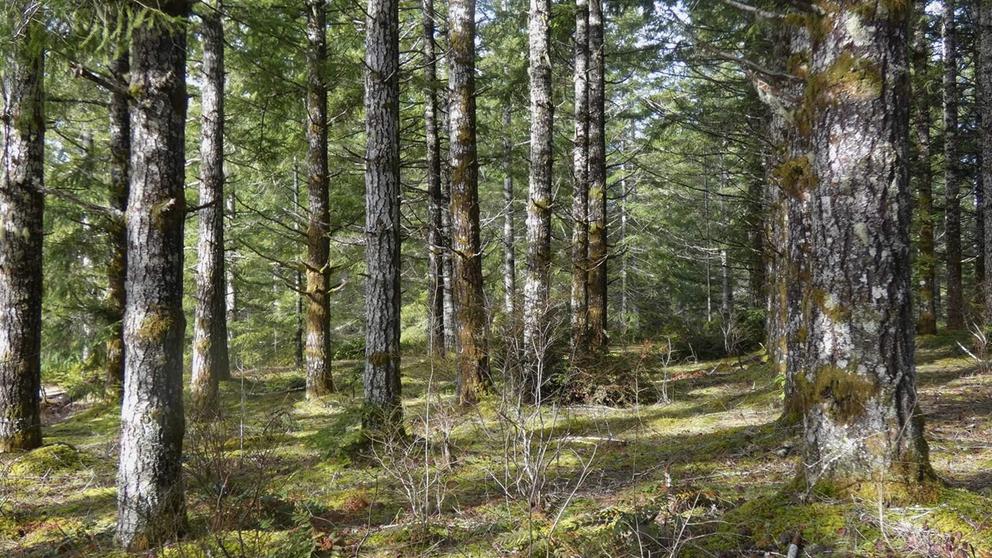The Dennie Ahl Seed Orchard, the state’s largest at 123 acres, has grown here since the U.S. Forest Service established it in 1956. Its trees, selected for genetic diversity and sourced from areas with varying climates and elevations, were meant to produce a steady supply of seed to support replanting efforts after timber harvests.
But this seed orchard, like many within the state and region, has fallen into disrepair. Many of the groves have grown too dense, limiting the trees’ ability to produce cones. Encroaching trees and plants have taken root among the carefully cultivated rows. Cuts to Forest Service funding and dwindling timber harvests over the past few decades left seed orchards such as Dennie Ahl low on the Forest Service’s priority list. With fewer acres to replant, the feds directed resources elsewhere.
Now, as megafires sweep much of the West, as forests contend with pests and disease, as climate change upends old planting strategies and as Congress invests billions for reforestation, forestry officials feel the need for seed. Lots of seed.
“We’re starting to have fires where we've never had them before, and a lot of our orchards that were mothballed are being looked at in a different vein,” said Vicky Erickson, regional geneticist with the U.S. Forest Service.
One of those different veins is a new state/federal partnership to produce more seeds. Thanks to an agreement known as the Good Neighbor Authority, the Washington Department of Natural Resources (DNR) is working across the state to restore Dennie Ahl and roughly two dozen other federal seed orchards, which would then supply seed for both state and federal forestry efforts.
Paying to fix the feds’ orchards, state officials say, will be faster and cheaper than starting their own from scratch. State forestry leaders in Washington hope their efforts can create a model for other Western states.
“The quickest way for both organizations to get seed going in an efficient way is to fix these places up,” said Jeff DeBell, geneticist and silviculturist with the DNR’s Genetic Resources Program. “It's a really efficient way to get seed in the seed bank.”
Congress has invested billions of dollars since 2021 to support reforestation efforts, and experts say that nurseries need to grow billions more seedlings to carry out that work. But state and federal nursery managers say they won't be able to scale up their growing and planting efforts without first increasing their seed supply.
The need has grown significantly in recent years. For each species that foresters grow, they must acquire seed from multiple climate zones and elevation profiles that match the areas where the trees will be planted. As fires and other disturbances are making reforestation more urgent, climate change has foresters rethinking their planting strategies — including seed sourcing — to adapt to projected conditions.
Seed orchards serve as both the laboratories and factories of that work.
“We have to attack this overwhelming task of having enough seed for everybody,” said Jeff deGraan, reforestation specialist with the Washington Department of Natural Resources. Just to cover DNR’s land base, he said, they must grow a wide variety of species sourced from an even wider variety of climate zones and elevation bands. The state must use 335 seed sources to cover all those combinations.
The DNR oversees two seed orchards to supply planting efforts across more than 2 million acres of state-managed forestland. In addition to its own seed orchards, the Department sources much of its seed from trees in the wild, contracting with climbers to clamber up trunks and collect cones in national forests. Such efforts are logistically challenging, time-consuming and cost-prohibitive. And many of the forests the DNR relies on for natural cones are threatened by wildfires.
State forestry leaders see the Forest Service’s long-neglected orchards as a solution.
Last fall, the DNR completed restoration work on the Wind River Seed Orchard in southwest Washington, the first state-managed project to restore a federal orchard. State department leaders see that project as a successful proof of concept, and they want to scale up fast.
Erickson, the Forest Service geneticist, said the Forest Service has lost much of its institutional expertise on seed orchards over the years. That knowledge has been better retained at the Washington DNR, making the partnership a good fit.
The Good Neighbor Authority, established by Congress in 2001 and expanded in the years since, allows states to undertake management work on federal lands. The agreement is a key part of Washington’s Forest Health Strategic Plan, and the DNR has recently ramped up wildfire prevention projects such as tree-thinning on federal lands.
Now the state is using that same tool to kickstart seed-growing efforts for future reforestation needs. In a particularly satisfying twist for state leaders, funds generated from timber sales on Good Neighbor Authority thinning projects have helped pay for some of the early orchard work.
At the Dennie Ahl Seed Orchard, the DNR is working with the U.S. Forest Service to inventory the trees in the orchard and assess the work required to restore their seed production. The DNR is asking Washington state lawmakers for $710,000 this year to fund restoration work on 13 seed orchards and manage the surrounding lands to protect them from wildfires. And it’s planning to harvest more revenue from its forest health projects, as well as federal reforestation funding from the infrastructure bill passed by Congress in 2021.
“This is a huge amount of work,” DeBell said. “It’s daunting, but it’s also super-important. It’s worth our try.”
For its part, the Forest Service is welcoming the state’s restoration plans with open arms.
“This is such an invaluable resource,” said Erin Baumgart, area geneticist with the Forest Service, who works on four national forests that include 14 seed orchards. “So much time and effort and energy and money has gone into making [seed orchards] productive places, so the onus is on us to keep it going and make them productive again.”
The partnership comes as state and federal officials grapple with questions of how climate change will alter planting strategies in the years to come. Washington natural resources leaders say they’re likely to use the same native species they plant today, but they may seek to “migrate” different genotypes of those species from zones where conditions are the same as those expected in the coming decades.
Having access to dozens of orchards throughout the state, with trees from many different growing regions, could prove critical to the DNR’s climate adaptation work. And the seed orchards could act as proving grounds to determine how trees will perform in new environments. Douglas firs from warmer, drier regions, for example, may be moved north or higher in elevation, as changing climate conditions make them better suited for the future than the Douglas firs growing there today.
“Seed orchards that were important for one forest now may be important for a different one,” said DeBell. “These are collections of a range of different trees, and we’re trying to maintain all the different families so we have a nice broad cross-section of that diversity to put back on the landscape.”
Eventually, climate change may force Washington state officials to grow trees from seed sources farther south in Oregon — one of many states in the region with Forest Service seed orchards in similar need of repair.
“Suddenly state and national boundaries don’t matter,” deGraan said. “We’ve worked in silos, but now it’s about getting to know your neighbors, sharing each other’s inventory list and making sure a scarce asset gets used.”
Baumgart, the Forest Service geneticist whose portfolio includes seed orchards in Washington and Oregon, said state and federal land managers are working together more closely than they have in the past.
“With upcoming challenges due to climate change, [seed orchards] are an asset regionally for us to pull together and tackle an issue on a larger scale,” she said. “They’re an invaluable repository, and every agency has their own stake in that.”
This story was produced for Stateline, an initiative of The Pew Charitable Trusts, on Feb. 22, 2023 and is republished here with permission.




